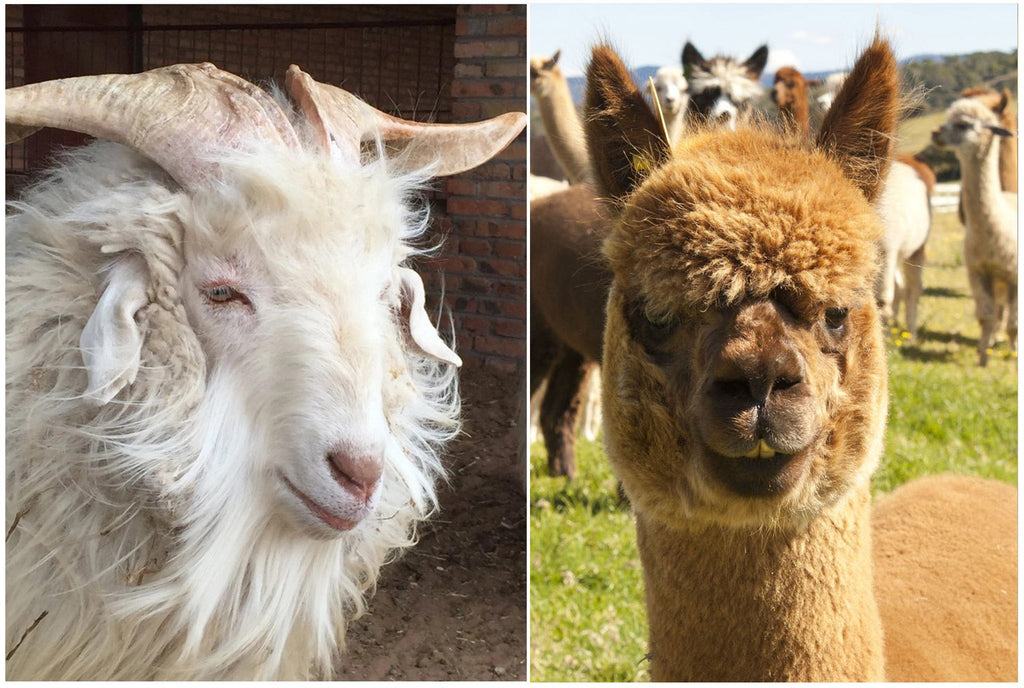Alpaca vs. Cashmere? 6 Big Differences

What makes the perfect sweater? For a garment to be a staple in our cold-weather wardrobe, it has to have the appropriate combination of softness, warmth, and durability –and plus points will go to a piece that is water-resistant, sustainable, and has good insulation. Vying for the position of “best sweater ever” are alpaca and cashmere, two natural fibers that have become synonymous with luxurious softness. But which one is better? Let’s see how each one fares when it comes to our non-negotiable sweater requirements.
Softness
Wool fiber is measured in microns and the smaller the micron, the finer and softer the wool. Good quality alpaca will typically have a thickness that ranges from 18-23 microns, while most cashmere fibers fall at 19 microns. This means alpaca can be just as, or softer than cashmere.
Quality
Cashmere’s high status began to change in the 1990s when the demand for cashmere wool rapidly grew, leading to mass production. As China produced in volume, the fiber’s status eventually devalued, shifting from luxury to mainstream. In effect, prices and quality have lowered over the years. Mass production has led breeders to cross-breed, resulting in goats producing more wool, but the fiber is shorter and not as refined. Some manufacturers will even mix cashmere fiber with synthetic yarns to increase its softness for a lower price. Therefore, not all cashmere is created equal. You really have to be meticulous when it comes to checking for quality. There is an artisanal element in the production of alpaca. Knitting and weaving this extraordinary fiber has been a time-honored craft that has become part of Peru’s cultural heritage. And to further preserve this Peruvian tradition that provides income to thousands of families, companies work directly with local breeders to not only ensure quality but to also provide these artisans with a great opportunity to secure a sustainable future.
Sustainability
Cashmere fiber comes from Hircus goats, whose grazing has been depleting their natural grasslands. In fact, it is well documented that the immense popularity of cashmere has decimated many grasslands in China. Alpacas have soft, padded feet. This means they can explore their natural habitat in the Peruvian Andes Mountains without causing damage. They can go for a stroll without destroying The root systems of the plants they consume. In other words, alpacas are easy on the land and promote a sustainable habitat, while cashmere goats create high environmental stress on the land they graze on. The devastation this creates has led to the desertification of the Inner Mongolian region, resulting in frequent dust storms in China. In addition, alpacas drink less water than Hircus goats but still manage to produce more wool. Specifically, one alpaca can already produce enough wool for four to five sweaters a year while it takes four goats to create a single cashmere sweater. And unlike cashmere that comes in limited natural colors and is typically dyed, alpaca comes in 22 different natural color variations. Since alpaca combines a treasured, traditional craft with the practice of sustainable methods, alpaca production can be placed under the “fair trade” banner.
Durability and Piling
Piling usually happens in fabrics with shorter hair. Cashmere fibers are four centimeters long, while alpaca fibers measure between eight to twelve centimeters. Because of this, piling happens more often in cashmere sweaters than in alpaca sweaters. And since alpaca fibers are more durable, they are also more water-resistant, long-lasting, and retain their luster long after cashmere pills and gets that worn look and feel.Insulation
Cashmere sweaters will provide you with good insulation, but alpaca further elevates this mandatory sweater requirement. Alpaca wool’s construction provides a hollow core that traps a pocket of air inside it. This means the fiber can warm up quickly and stay insulated longer. It also breathes through these air pockets, effectively moderating the temperature. Cashmere does not have the same fiber structure, therefore, cannot provide the same level of insulation as alpaca fiber.
Exclusiveness/Rarity
There are about a little less than 5 million alpacas used for wool production while there are more than 700 million cashmere goats that contribute to the cashmere industry. This makes alpaca a rarity compared to cashmere. It really pays to be an informed shopper. Your purchase is not only a fashion investment, but it can have an impact on the environment and indigenous communities too. We hope with his information, you’ll make the right choice the next time you go sweater or even scarf shopping.
You Can Browse and Shop Our Collections.
